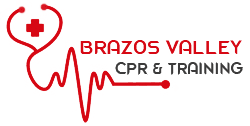The Basic Life Support (BLS) for Healthcare Providers Course
This course is designed to provide a wide variety of healthcare professionals the ability to recognize several life-threatening emergencies, provide CPR, use an AED, and relieve choking in a safe, timely, and effective manner.
The Advanced Cardiac Life Support Course
This course is a classroom-based course, in which providers enhance their skills in treating adult victims of cardiac arrest or other cardiopulmonary emergencies, while earning their American Heart Association ACLS (AHA ACLS) for the Healthcare Providers Course Completion Card.

The Pediatric Advanced Life Support (PALS)
This is a classroom, video-based, instructor-led course that uses a series of simulated pediatric emergencies to reinforce the important concepts of a systematic approach to pediatric assessment, basic life support, PALS treatment algorithms, effective resuscitation, and team dynamics. The goal of the PALS Course is to improve the quality of care provided to seriously ill or injured children, resulting in improved outcomes.
Heartsaver® CPR/AED
Heartsaver® CPR/AED is a classroom, video-based, instructor-led course that teaches adult CPR and AED use, as well as how to relieve choking on an adult. This course teaches skills with AHA’s research-proven Practice-While-Watching (PWW) technique, which allows instructors to observe the students, provide feedback, and guide the students’ learning of skills.
Heartsaver® First Aid CPR/AED
Heartsaver® First Aid CPR/AED is a classroom, video-based, instructor-led course that teaches students critical skills needed to respond to and manage a first aid, choking, or sudden cardiac arrest emergency in the first few minutes until emergency medical services (EMS) arrives.
Heartsaver Pediatric First Aid CPR/AED
The Heartsaver Pediatric First Aid CPR/AED course is designed to meet the regulatory requirements for child care workers. It teaches child care providers and others to respond to and manage illnesses and injuries in a child or infant in the first few minutes until professional help arrives.
